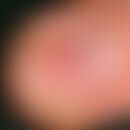HistoryThis section has been translated automatically.
Tripe, 1845
DefinitionThis section has been translated automatically.
A painful, permanent erection without sexual arousal that goes beyond a prolonged erection, cannot be influenced arbitrarily and lasts from several hours to days. There is a complete venous outflow blockage of the erectile tissue (corpora cavernosa) due to permanently relaxed erectile tissue muscles with oxygen deficiency andexcess CO2.
Notice! After 8-12 hours there is a risk of consecutive erectile tissue fibrosis!
You might also be interested in
EtiopathogenesisThis section has been translated automatically.
Various causes have been described: Idiopathic (35-70%), after SKAT/tumescent autoinjection therapy (autoinjection therapy with vasoactive drugs), drug-induced (especially psychotropic drugs), after drugs and alcohol, posttraumatic.
TherapyThis section has been translated automatically.
- Cooperation with the urologist. Multiple puncture of the erectile tissue with large cannula under sterile conditions (drainage of 50-200 ml stasis blood), heparin injection (2500 E per erectile tissue in physiological NaCl solution).
- Alpha-Sympathomimetics: Or Effortil 10-30 mg p.o. (at the onset of blood pressure rise 10-20 mg Adalat p.o.). Cave! Hypertonic crisis!
- Operative relief (removal and shunt surgery). Therapy of the underlying disease.
LiteratureThis section has been translated automatically.
- Maan Z et al (2003) Priapism--a review of the medical management. Expert Opinion Pharmacother 4: 2271-2277
- Meineke V et al (2003) Malignant priapism as a sign of a recurrent prostate cancer. Differential diagnosis of induratio penis plastica. dermatologist 54: 541-543
- Schneede P et al (1999) Partial priapism. Case report and review of the literature of diagnostic and therapeutic measures. Urologist A 38: 179-183
- Tripe JW (1845) Case of Priapism. Lancet 2: 8
Incoming links (3)
Erection, prolonged; Penile vein thrombosis; Skat/swelling body autoinjection therapy;Disclaimer
Please ask your physician for a reliable diagnosis. This website is only meant as a reference.




